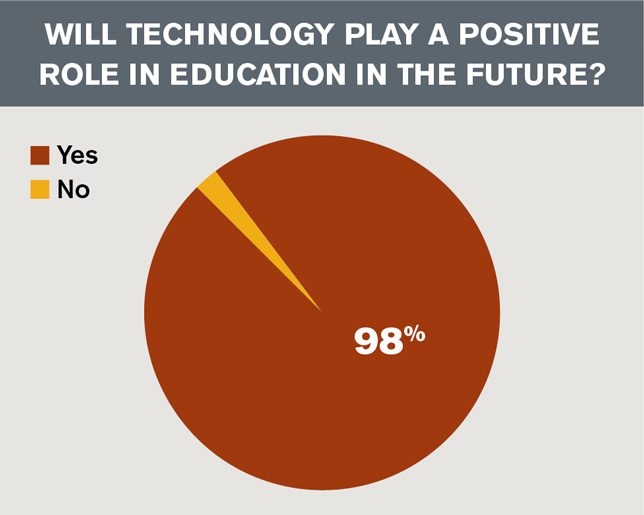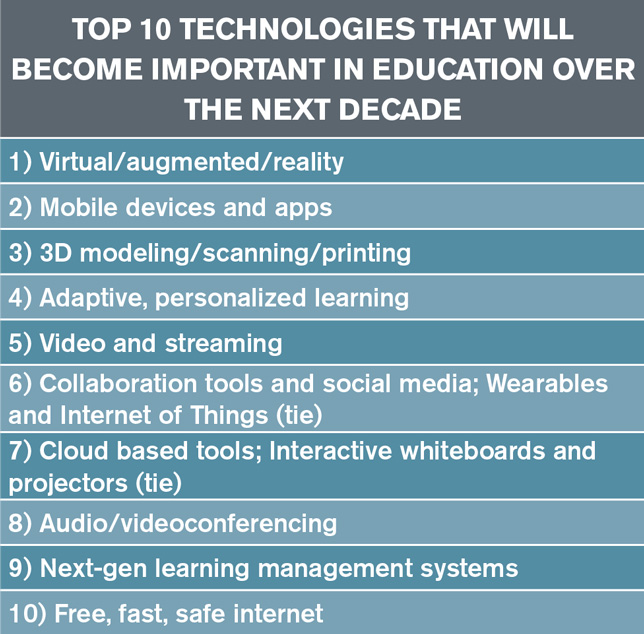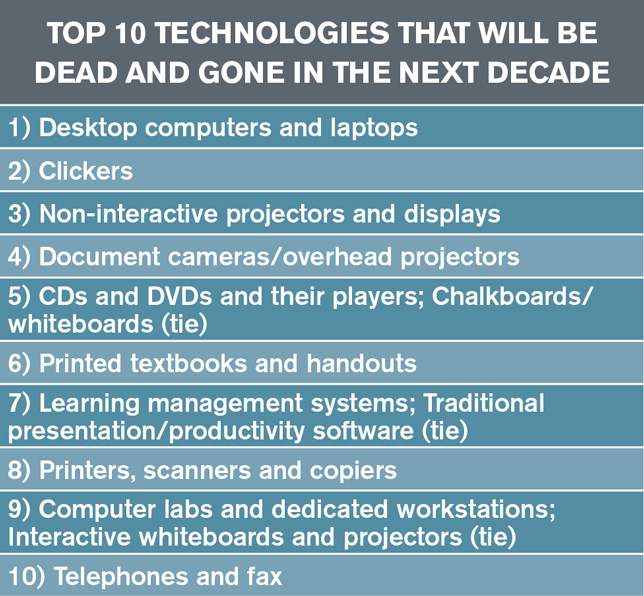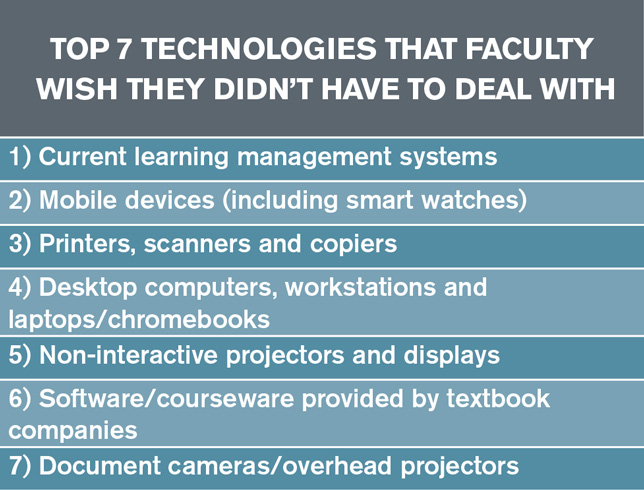Archive of ‘Digital literacy’ category
LITA discussions on vendors for VR in academia
At WMU, the Libraries is partnering with our central OIT to host a VR lab in the main library. My partnering co-director, Kevin, is really the subject matter expert but I’m managing a lot of the day-to-day operations. Kevin is programming and experimenting with all kinds of hardware but we decided to use Oculus Rifts in our lab primarily because of the greater durability of the hand controllers (compared especially to the Vive). We’re getting all of our games through the Oculus store and have plans to expand into Steam or another provider but haven’t done so yet. We currently have 40+ titles available for gaming and educational purposes. We also teach content creation using Unity, Maya, Blender, and a handful of other tools.
https://wmich.edu/vr and https://wmich.edu/library/services/vr
Happy to provide more information but hopefully this gives you a good start.
Best wishes,
Scooter
Scott Russell, Director of IT Services
University Libraries, Western Michigan University
+++++++++++++
more on VR in this IMS blog
https://blog.stcloudstate.edu/ims?s=virtual+reality
Library of Congress launched the National Screening Room. The National Screening Room currently offers about 300 videos. The videos are digital copies of films made in the 19th and 20th centuries. You can browse the collection by date, location of the filming, and subject. You can also search for videos that are parts of other LOC collections. All of the videos in the National Screening Room can be viewed online and or downloaded as MP4 files.
Flickr is known for hosting millions of images, but it also hosts lots of videos. how to find public domain videos on Flickr
Pixabay has been one of my go-to sites for public domain images for years. Pixabay also offers public domain video clips that you can download for free.
The Public Domain Review is a website that features collections of images, books, essays, audio recordings, and films that are in the public domain
+++++++++++
more on free images in this IMS blog
https://blog.stcloudstate.edu/ims?s=stock
places to find public domain images online.
Ihamäki, P. (n.d.). Ihamäki, P. & Heljakka K. (2018) “Travel Bugs”: Toys Traveling Socially through Geocaching.
Digital Games Research Association DiGRA. Retrieved from
https://www.academia.edu/37675498/Iham%C3%A4ki_P._and_Heljakka_K._2018_Travel_Bugs_Toys_Traveling_Socially_through_Geocaching
Keywords
Geocaching, Travel Bugs, Toy tourism, Toy Mobility, Gamification, Social play
ABSTRACT
This study explores emerging types of mobile and social play patterns through theobject-based, but technologically enhanced practices of toy tourism. As our case studiesdemonstrate, object play practices in the digitalizing world are not only becomingincreasingly social in nature, but even more mobile than before. As illustrated by ourstudy focusing on Travel Bugs in the context of the international game of geocaching,toys become mobile through different practices partaken by players, willing to either become involved in toy tourism with their playthings. Our study consisted of 45 survey responses from geocachers traveling with Travel Bugs. According to the results, mobileand social object play practices enabled by the platform of Geocaching become gamified
–
i.e. more perceivable, goal-oriented and measurable.
Our main contributionis a conceptual framework in which the relations between the digital, the physical andthe social dimensions of toy tourism are modelled
+++++++++
more on gamification in this IMS blog
https://blog.stcloudstate.edu/ims?s=gamification
What Happens to Student Data Privacy When Chinese Firms Acquire U.S. Edtech Companies?
https://www.edsurge.com/news/2018-04-24-what-happens-to-student-data-privacy-when-chinese-firms-acquire-u-s-edtech-companies
Between the creation of a social rating system and street cameras with facial recognition capabilities, technology reports coming out of China have raised serious concerns for privacy advocates. These concerns are only heightened as Chinese investors turn their attention to the United States education technology space acquiring companies with millions of public school users.
A particularly notable deal this year centers on Edmodo, a cross between a social networking platform and a learning management system for schools that boasts having upwards of 90 million users. Net Dragon, a Chinese gaming company that is building a significant education division, bought Edmodo for a combination of cash and equity valued at $137.5 million earlier this month.
Edmodo began shifting to an advertising model last year, after years of struggling to generate revenue. This has left critics wondering why the Chinese firm chose to acquire Edmodo at such a price, some have gone as far as to call the move a data grab.
as data becomes a tool that governments such as Russia and China could use to influence voting systems or induce citizens into espionage, more legislators are turning their attention to the acquisitions of early-stage technology startups.
NetDragon officials, however, say they have no interest in these types of activities. Their main goal in acquiring United States edtech companies lies in building profitability, says Pep So, NetDragon’s Director of Corporate Development.
In 2015, the firm acquired the education technology platform, Promethean, a company that creates interactive displays for schools. NetDragon executives say that the Edmodo acquisition rounds out their education product portfolio—meaning the company will have tools for supporting multiple aspects of learning including; preparation, instructional delivery, homework, assignment grading, communication with parents students and teachers and a content marketplace.
NetDragon’s monetization plan for Edmodo focuses on building out content that gets sold via its platform. Similar to tools like TeachersPayTeachers, So hopes to see users putting up content on the platform’s marketplace, some free and others for a fee (including some virtual reality content), so that the community can buy, sell and review available educational tools.
As far as data privacy is concerned, So notes that NetDragon is still learning what it can and cannot do. He noted that the company will comply with Children’s Online Privacy Protection Act (COPPA), a federal regulation created in order to protect the privacy of children online, but says that the rules and regulations surrounding the law are confusing for all actors involved.
Historically, Chinese companies have faced trust and branding issues when moving into the United States market, and the reverse is also true for U.S. companies seeking to expand overseas. Companies have also struggled to learn the rules, regulations and operational procedures in place in other countries.
++++++++++++
Iran and Huawei top agenda as Pompeo meets Merkel for 45 minutes in Berlin
https://uk.finance.yahoo.com/news/pompeo-merkel-iran-huawei-agenda-110409835.html
++++++++++++
Merkel to Ratchet up Huawei Restrictions in Concession to Hawks
https://www.bloomberg.com/news/articles/2019-11-13/merkel-to-ratchet-up-huawei-restrictions-in-concession-to-hawks
+++++++++++++
more on data privacy in this IMS blog:
https://blog.stcloudstate.edu/ims?s=data+privacy
Kelly, B. R., & 10/11/17. (n.d.). Faculty Predict Virtual/Augmented/Mixed Reality Will Be Key to Ed Tech in 10 Years -. Retrieved October 31, 2018, from https://campustechnology.com/articles/2017/10/11/faculty-predict-virtual-augmented-mixed-reality-will-be-key-to-ed-tech-in-10-years.aspx




Our survey polled 232 faculty members across the country about their use of technology in the classroom, their likes and dislikes, their predictions for the future and more. The majority of respondents (68 percent) come from public institutions, with 28 percent from private nonprofits and 4 percent working at for-profit schools. Seventy-two percent work at four-year colleges or universities; 26 percent are at community colleges (the remaining 2 percent designated their institutional level as “other”).
Respondents represent institutions of a range of sizes, with about one-third (32 percent) working in colleges or universities with 2,500 to 9,999 students. Just under half (45 percent) of respondents are from institutions with 10,000 students or more.
Our respondents are veterans of higher education: The largest group (47 percent) has more than 20 years of experience, with 81 percent logging at least 11 years in the field.
The top three most common school and college types among our respondents are education (22 percent), business/business administration (17 percent) and liberal arts (12 percent). But overall, respondents work in a wide range of disciplines, from engineering and medicine to humanities and fine arts. The top 10 states with the most survey respondents are New York, Texas, California, Florida, Georgia, Virginia, Illinois, Missouri, Pennsylvania and Massachusetts.
++++++++++++++++
More about XR in this IMS blog:
Are ‘Smart’ Classrooms the Future?
Indiana University explores that question by bringing together tech partners and university leaders to share ideas on how to design classrooms that make better use of faculty and student time.
By Julie Johnston 10/31/18 https://campustechnology.com/articles/2018/10/31/are-smart-classrooms-the-future.aspx
- Untether instructors from the room’s podium, allowing them control from anywhere in the room;
- Streamline the start of class, including biometric login to the room’s technology, behind-the-scenes routing of course content to room displays, control of lights and automatic attendance taking;
- Offer whiteboards that can be captured, routed to different displays in the room and saved for future viewing and editing;
- Provide small-group collaboration displays and the ability to easily route content to and from these displays; and
- Deliver these features through a simple, user-friendly and reliable room/technology interface.
Key players from Crestron, Google, Sony, Steelcase and Spectrum met with Indiana University faculty, technologists and architects to generate new ideas related to current and emerging technologies. Activities included collaborative brainstorming focusing on these questions:
- What else can we do to create the classroom of the future?
- What current technology exists to solve these problems?
- What could be developed that doesn’t yet exist?
- What’s next?
top five findings:
- Screenless and biometric technology will play an important role in the evolution of classrooms in higher education. We plan to research how voice activation and other Internet of Things technologies can streamline the process for faculty and students.
- The entire classroom will become a space for student activity and brainstorming; walls, windows, desks and all activities are easily captured to the cloud, allowing conversations to continue outside of class or at the next class meeting.
- Technology will be leveraged to include advance automation for a variety of tasks, so the faculty member is released from duties to focus on teaching.
- The technology will become invisible to the process and enhance and customize the experience for the learner.
- Virtual assistants could play an important role in providing students with a supported experience throughout their entire campus career.
A full report on the summit findings is available here.
Further, this article
Kelly, B. R., & 10/11/17. (n.d.). Faculty Predict Virtual/Augmented/Mixed Reality Will Be Key to Ed Tech in 10 Years -. Retrieved October 31, 2018, from https://campustechnology.com/articles/2017/10/11/faculty-predict-virtual-augmented-mixed-reality-will-be-key-to-ed-tech-in-10-years.aspx
My note:
In September 2015, the back-then library dean (they change every 2-3 years) requested a committee of librarians to meet and discuss the remodeling of Miller Center 2018. By that time the SCSU CIO was asserting the BYOx as a new policy for SCSU. BYOx in essence means the necessity for stronger (wider) WiFI pipe. Based on that assertion, I, Plamen Miltenoff, was insisting to shift the cost of hardware (computers, laptops) to infrastructure (more WiFi nods in the room and around it) and prepare for the upcoming IoT by learning to remodel our syllabi for mobile devices and use those (students) mobile devices, rather squander University money on hardware. At least one faculty member from the committee honestly admitted she has no idea about IoT and respectively the merit of my proposal. Thus, my proposal was completely disregarded by the self-nominated chair of the committee of librarians, who pushed for her idea to replace the desktops with a cart of laptops (a very 2010 idea, which by 2015 was already passe). As per Kelly (2018) (second article above), it is obvious the failure of her proposal to the dean to choose laptops over mobile devices, considering that faculty DO see mobile devices completely replacing desktops and laptops; that faculty DO not see document cameras and overhead projectors as a tool to stay.
Here are the notes from September 2015 https://blog.stcloudstate.edu/ims/2015/09/25/mc218-remodel/
As are result, my IoT proposal as now reflected in the Johnston (2018) (first article above), did not make it even formally to the dean, hence the necessity to make it available through the blog.
The SCSU library thinking regarding physical remodeling of classrooms is behind its times and that costs money for the university, if that room needs to be remodeled again to be with the contemporary times.
Social Credit System
https://en.wikipedia.org/wiki/Social_Credit_System
China ‘social credit’: Beijing sets up huge system
++++++++++++++++
more on Fair Use on this IMS blog
https://blog.stcloudstate.edu/ims?s=fair+use
Micro-credentials awarded for in-demand skills give employers deeper detail about a student’s abilities.
Matt Zalaznick. June 7, 2017
While employers increasingly demand that new hires have college degrees, the transcripts supporting those hard-earned credentials are no longer the most informative tool students have to exhibit their skills.
An estimated 1 in 5 institutions issue digital badges, which can be posted to social media, stored on digital portfolios and displayed by other specially designed platforms. When clicked on, the badge lists a range of skills a student has demonstrated beyond grades.
“The reason they’re taking off in higher education is most employers are not getting the information they need about people emerging from higher ed, with previous tools we’ve been using,” says Jonathan Finkelstein, founder and CEO of the widely used badging platform Credly. “The degree itself doesn’t get to level of describing particular competencies.”
For instance, a Notre Dame student who goes on a trip to Ecuador to build bridges can earn a badge for mastering the calculations involved in the construction, says G. Alex Ambrose, associate program director of e-portfolio assessment at the Indiana university’s Kaneb Center for Teaching & Learning.
Students can be pretty certain when they have passed calculus or creative writing, but they don’t always recognize when they’ve excelled in demonstrating soft skills such as critical thinking, communication and work ethic, says MJ Bishop, director of the system’s William E. Kirwan Center for Academic Innovation.
Badges have been most popular in the school of education—including with student teachers who, in turn, have created badges for the elementary and secondary classrooms where they’ve apprenticed, says Anna Catterson, the university’s educational technology director.
The campus library is another badging hotspot. Students there have earned microcredentials for research, 3D printing and other skills. These badges are being shared on LinkedIn and other platforms to obtain internships and scholarships.
The university runs faculty training sessions on badging and has established a review process for when faculty submit ideas for microcredentials.
One pothole to avoid is trying to create a schoolwide badge that’s standardized across a wide range of courses or majors. This can force the involvement of committees that can bog down the process, so it’s better to start with skills within single courses, says Ambrose at Notre Dame.
When creating a badge, system faculty have to identify a business or industry interested in that credential.
Badges that have the backing of a college or university are more impressive to job recruiters than are completion certificates from skill-building websites like Lynda.com.
Students won’t be motivated to earn a badge that’s a stock blue ribbon downloaded off the internet. Many institutions put a lot work into the design, and this can include harnessing expertise from the marketing department and graphic designers
+++++++++++
more on micro-credentialing in this IMS blog
https://blog.stcloudstate.edu/ims?s=microcredentialing
Creating Digital Badges to Incentivize Participation in Faculty Development
November 7, 2018 | 1:00 – 2:00 p.m. EST
Creating Digital Badges to Incentivize Participation in Faculty Development
Badges are more than just participation trophies. Design them to commensurately represent the knowledge and skills gained.
While many institutions have used digital badges as an alternative way to recognize the skills and knowledge developed by students, some are also starting to use this approach in their in-house professional development programs – especially in faculty development programs.
By offering well-designed badges that accompany these programs, you can boost both participation and impact. Join us for this online training and learn how to design your badges to encourage deeper engagement that goes beyond “showing up”. Our instructor, Lindsay Doukopoulos, will share best practices for badging criteria at Auburn University, where 82% of participants chose to earn badges at annual professional development workshops.
indsay Doukopoulos Ph.D.
Assistant Director, Biggio Center for the Enhancement of Teaching and Learning, Auburn University
Lindsay’s teaching expertise includes experiential, active, and team-based learning in small and large lecture formats. Her research interests include instructional technologies and the use of digital artifacts (e.g., badging, ePortfolios, etc.) to assess and enhance integrated learning, gameful learning, and metacognition for students and faculty.
After a brief overview of our instructor’s faculty development badging program, we’ll walk through several badges Auburn has implemented for faculty. For each badge collection, we’ll address the following:
- How was it designed, and what elements were considered in the design process?
- What are the criteria for earning the badges? Why?
- Who has earned the badges to date?
- What impact did badge earners self-report?
- What kind of data or artifacts did faculty submit to earn this badge / badge constellation? What did these show about how faculty were using what they learned?
We’ll close with a brief exercise that will let you start designing your own badge criteria for a program on your campus.
$525 through Oct 31$600
Live Webcast + Recording
- Access to the live webcast: Invite your team!
- Links to all presentation materials and resources
- Permanent recording of the live webcast
++++++++++++++++
+++++++++++++++++
more on badges in this IMS blog
https://blog.stcloudstate.edu/ims?s=badges



